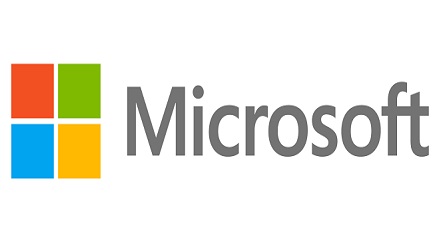E-Business
Microsoft Going Head-To-Head with Cisco, Other UC&C Vendors in EMEA

According to a recent study by International Data Corporation (IDC), Microsoft has tripled its market share between 1Q 2011 and 2Q 2015 in the Europe, Middle East, and Africa (EMEA) IP PBX and unified communications (UC) platform market and become a head-to-head competitor to the vendors that have traditionally dominated this market.
“This is a result of a strategy tuned to the transformations underway in the unified communications and collaboration (UC&C) market. All other vendors and service providers should regard Microsoft’s rise as a call to action,” said, Michael Vorisek, program manager IDC CEMA.
For many years, the EMEA IP PBX and UC platform market had been dominated by five companies: Alcatel-Lucent Enterprise, Avaya, Cisco, Aastra (now part of Mitel), and Unify (formerly Siemens Enterprise Communications).
These players’ market shares used to vary between 10% and 20%, with no other company capturing a comparable slice of the pie.
IDC’s research, published in December 2015, shows that this has now changed. Microsoft’s market share has grown from 4.8% in Q1 2011 to 15.5% in Q2 2015, and the company has become the fourth-largest player in the Q3 2014–Q2 2015 period, thus breaking into the long-established leader group.
This is not a random rise of a vendor, says IDC. The companies that had dominated the EMEA IP PBX and UC platform market come from equipment- and on-premises-focused backgrounds. They were too slow to react to the rapidly changing adoption patterns in the market, and Microsoft seized the opportunity.
IDC sees related shifts taking place in customer adoption patterns in the EMEA UC&C market today: organizations started using unified communications as a service (UCaaS) instead of deploying on-premises solutions; portfolios have radically simplified, and the number of premium features for which vendors can be charging fees has decreased; customers now require easy access to UC&C functionalities irrespective of end-user’s preferred endpoint; and demand has grown for traceable improvements to business processes as a result of UC&C deployments.
Microsoft’s rise has relied on its ability to profit from all these changes.
According to IDC, this is due to the company’s overall strategy. Microsoft understands its UC&C product Skype for Business purely as software.
Therefore, it has built the options for cloud delivery and mobile access natively into the product. Businesses pay fees based on end-user functionality, while no charges are added for different access modes or preferred customer endpoints.
The vendor is also strongly focusing on as-a-service (aaS) version of the product, Skype for Business Online. Microsoft aaS packages often combine cloud and hardware-based resources for delivering functionalities, while businesses are charged on a “pay-as-you-go” basis. Last but not least, Microsoft bundles Skype for business with other productivity software included in its Office suite.
“Traditional players must either quickly adopt to this challenge or prepare to lose market share,” comments Vorisek. “That goes for equipment vendors right now, but, potentially, for services providers as well.”
E-Business
Study Reveals Majority of IT Professionals Show Openness to Cyber Immunity

The cybersecurity landscape is evolving rapidly, with organisations seeking more robust ways to protect their digital assets. A recent global study conducted by Kaspersky reveals a growing shift toward proactive security strategies, particularly the adoption of Secure by Design development and Cyber Immunity – an innovative approach that embeds resilience directly into system architecture.

The study highlights that 90% of cybersecurity professionals surveyed in the Middle East, Turkiye and Africa (META) region are familiar with Secure by Design development. This methodology integrates security into the very fabric of a system from its inception, rather than treating it as an afterthought.
Such an approach is already employed in high-stakes industries like aerospace, where security cannot be bolted on later – it must be intrinsic. Despite its advantages, however, adoption has been slow due to challenges related to standardisation and cost.
Cyber Immunity is the next frontier in cybersecurity
Building on Secure by Design principles, Cyber Immunity takes cybersecurity a step further by creating systems that inherently resist attacks without the need for constant patching or additional security layers. The study reveals that most experts are familiar with Cyber Immunity but interpret it differently.
When asked what they associate with the term, 64% of respondents in the META region linked it to Secure by Design systems that remain resilient under attack, while 56% viewed it as a combination of technology and policy measures that block cybercriminal access. Another 48% connected it to highly skilled cybersecurity teams, indicating that while awareness is high, a unified understanding is still developing.
The growing demand for proactive security
One of the most striking findings is the optimism surrounding inherently secure systems. Over half of respondents in the META region (63%) believe it is already possible or definitely achievable to design systems capable of withstanding cyberattacks without relying on additional security solutions.
Another 32% think it might be possible, reflecting openness to this idea despite some uncertainty. This shift in mindset aligns with a broader industry trend: traditional reactive security measures are no longer sufficient.
With AI-powered threats and increasingly sophisticated attacks, organisations need solutions that do more than just detect breaches—they must prevent them by design.
Integrating Cyber Immunity into security strategies
The study emphasises that resilience, expertise, and flexibility will define the next generation of cybersecurity. While Secure by Design provides the methodology, Cyber Immunity represents the ultimate goal—systems so robust that they minimise reliance on external defences.
“For companies looking ahead, Cyber Immunity offers more than just protection — it brings clear business benefits. When systems are built to be secure from the ground up, there’s less need for constant updates, patches, and extra security tools. That means fewer costs, less strain on IT teams, and stronger, more reliable protection over time,” said Dmitry Lukiyan, Head of KasperskyOS Business Unit.
Most importantly in today’s threat landscape, Cyber Immunity offers robust protection against next-generation challenges — including AI-driven attacks capable of outmaneuvering traditional security measures.
When security becomes an intrinsic property of system architecture rather than an external addition, businesses gain more than just protection—they secure a competitive market advantage.
This proactive approach future-proofs critical infrastructure, enabling organisations to operate confidently even as threats evolve. It transforms cybersecurity from a defensive necessity into a strategic differentiator that accelerates digital transformation while mitigating risk.
As the cybersecurity environment becomes more complex, Cyber Immunity is emerging as a vital strategy. Organisations that adopt it now will not only enhance their protection but also position themselves ahead of the curve in an increasingly volatile digital world.
E-Business
Konga launches Jara sales with 25% discount on Starlink kits, free delivery

Konga, Nigeria’s leading composite e-commerce platform, has launched its inaugural 2026 shopping campaign, Konga Jara, offering 25 per cent discount on Starlink internet kits alongside free nationwide delivery.

Konga
The campaign, drawing from the Nigerian concept of “jara” — the extra value traders add to purchases — aims to deliver exceptional deals across categories, helping shoppers turn new year aspirations into reality through affordable technology and value-driven shopping.
To qualify for the Starlink discount, customers must purchase kits on Konga.com, activate them at starlink.com/activate, and email activation details to [email protected] for verification against Starlink’s records. Discounts are subject to terms and conditions.
Konga said spotlighting Starlink underscores reliable internet’s role in Nigeria’s digital economy, supporting work, learning, entrepreneurship and communication for households and businesses.
Mr Onochie Melvin, Head of Commercial Planning at Konga, said: “We listened carefully to what Nigerians said they needed to truly kickstart 2026 on the right footing. Reliable internet connectivity emerged as the foundation upon which other aspirations depend.”
He added: “Students need it for online learning, entrepreneurs need it to scale digital businesses, and professionals rely on it for remote work. This Starlink offer is not just about selling products; it is about removing barriers that prevent Nigerians from fully participating in the digital economy.”
Beyond connectivity, Konga Jara provides genuine products from original equipment manufacturers (OEMs) with transparent pricing, warranties and authenticity guarantees.
As a composite e-commerce ecosystem, Konga integrates shopping, payments and logistics for seamless nationwide access, with exclusive deals shared via its social media channels throughout the campaign.
Shoppers can explore offers at www.konga.com and follow Konga’s official pages for updates across the Konga Group.
E-Business
Firm Identifies Global Scam Activity Linked to the Release of Avatar 3

The premiere of Avatar 3 has taken place in several countries and has been accompanied by a noticeable increase in online interest. Amid the heightened attention surrounding the release, Kaspersky experts identified an increase in cyber-scam campaigns that exploit the movie’s launch and users’ desire to watch it online. The fraudulent websites target users across multiple regions, indicating attempts by attackers to reach a global audience.

The scam operates as follows: cybercriminals create suspicious websites that offer online access to the Avatar 3 movie. Attackers place particular emphasis on localisation, publishing the sites in multiple languages to attract users from different countries. However, the translations are often poorly executed and contain grammatical errors and inconsistencies, which may serve as indicators of fraudulent activity.
When users attempt to start the video, they are presented with a fake media player and prompted to register in order to obtain “full” or “unlimited” access to the film. As part of the registration process, users are asked to provide personal information, including an email address and mobile phone number.
At later stages, scammers may request additional data, including payment details, under the guise of activating a “free trial.” This creates risks of credential compromise, particularly if users reuse passwords across multiple services, and may also lead to financial losses.
“Cybercriminals consistently exploit major movie premieres to capture users’ attention and increase the effectiveness of their schemes. We advise accessing films only through official platforms and exercising caution when encountering websites that request personal or payment information. It is also important to use reliable security solutions to protect all devices, including mobiles,” comments Olga Altukhova, Senior web content analyst at Kaspersky.

 News2 days ago
News2 days agoKaspersky Shares AI Cybersecurity Predictions for 2026

 General News2 days ago
General News2 days agoPalmPay Deepens Its Long-Term Commitment in Nigeria with New Office @ Yaba

 Broadcasting2 days ago
Broadcasting2 days agoYouth Talent Takes Center Stage as T2 Ignites High-Octane Rap Battles @ Carnival Calabar

 E-Financial2 days ago
E-Financial2 days agoWema Bank Launches SAW AI Voice Assistant for Seamless Banking on ALAT 2.0

 E-Financial2 days ago
E-Financial2 days agoKuda Microfinance Bank Releases ‘My Year on Kuda’ 2025 Financial Recap

 E-Financial2 days ago
E-Financial2 days agoFidelity Bank Completes N500Bn Capital Raise ahead of Deadline

 E-Business2 days ago
E-Business2 days agoKonga launches Jara sales with 25% discount on Starlink kits, free delivery

 Broadcasting2 days ago
Broadcasting2 days agoAig-Imoukhuede Foundation Wrapped Up 2025 with Real Change in Governance, Health, Media Across Africa















